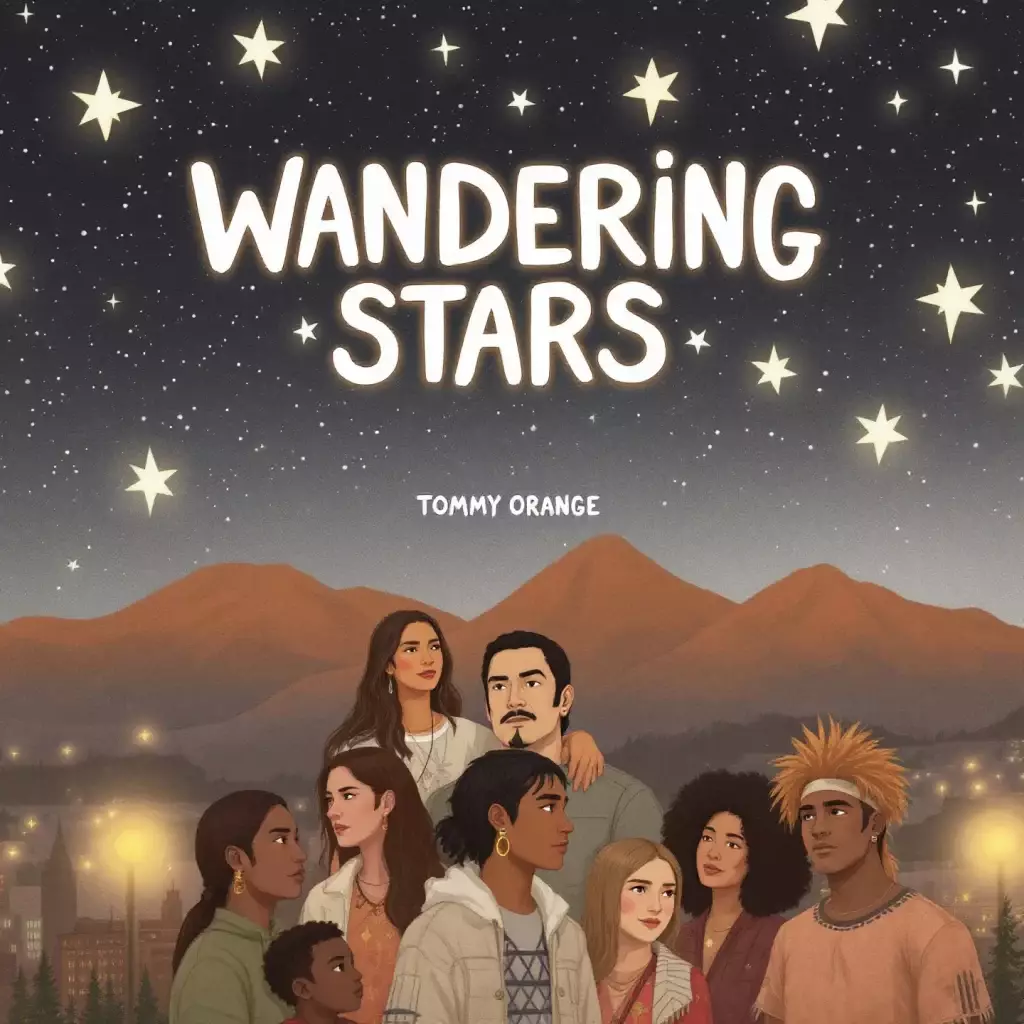Tommy Orange, a prominent voice in contemporary Native American literature, has captivated readers with his poignant storytelling and profound insights into the Native American experience. His latest work, “Wandering Stars,” continues this tradition, offering a rich tapestry of characters and narratives that delve into themes of identity, displacement, and resilience. In this article, we will explore the intricate layers of the novel, examining its literary devices, themes, and the social commentary embedded within its pages.
Table of Contents
Context and Background Information
Tommy Orange burst onto the literary scene with his debut novel, “There There,” which garnered critical acclaim for its raw and unflinching portrayal of urban Native American life. “Wandering Stars,” his follow-up work, builds on this foundation, further exploring the complexities of Native American identity in the modern world. Set against the backdrop of contemporary America, the novel weaves together multiple narratives, each offering a unique perspective on the struggles and triumphs of Native American individuals and communities.
Literary Devices and Techniques
Narrative Structure
One of the most striking features of the novel is its non-linear narrative structure. Orange employs a fragmented storytelling approach, interweaving the lives of various characters across different timelines. This technique not only mirrors the fragmented nature of Native American history but also allows readers to see the interconnectedness of the characters’ experiences.
Symbolism
Orange uses symbolism extensively throughout the novel. The title itself is a powerful symbol, representing the characters’ sense of displacement and their search for belonging. The stars, often seen as guiding lights, symbolize hope and the possibility of finding one’s way, even in the darkest of times.
Imagery
Vivid imagery is another hallmark of Orange’s writing. He paints a visceral picture of the urban landscapes and natural settings that his characters inhabit. For instance, in one passage, he describes the city as “a concrete jungle where the stars are obscured by the neon lights,” highlighting the tension between the natural world and the artificial environment.

Themes and Subtext
Identity and Displacement
At its core, “Wandering Stars” is a meditation on identity and displacement. The characters grapple with their sense of self in a world that often marginalizes and erases their cultural heritage. Through their stories, Orange explores the ways in which history, memory, and community shape one’s identity.
Resilience and Survival
Another central theme in the novel is resilience. Despite the numerous challenges they face, the characters exhibit a remarkable capacity for survival. This resilience is not just physical but also emotional and spiritual, as they navigate the complexities of their lives with strength and determination.
Social Commentary
Orange’s work is deeply rooted in social commentary. “Wandering Stars” addresses issues such as systemic racism, cultural appropriation, and the ongoing impact of colonialism on Native American communities. By highlighting these issues, Orange invites readers to reflect on the broader societal structures that perpetuate inequality and injustice.
Quotations and Examples
To illustrate the themes and techniques discussed, let’s look at a few key passages from “Wandering Stars”:
- “We are the wandering stars, lost in the vast expanse of history, searching for a place to call home.” This quote encapsulates the central motif of displacement and the characters’ quest for belonging.
- “In the city, the stars are hidden, but we carry their light within us.” Here, Orange uses imagery to convey the resilience and inner strength of his characters.
Conclusion
“Wandering Stars” by Tommy Orange is a masterful exploration of identity, displacement, and resilience. Through its non-linear narrative, rich symbolism, and vivid imagery, the novel offers a profound commentary on the Native American experience in contemporary America. By delving into the lives of his characters, Orange not only tells their stories but also sheds light on the broader societal issues that continue to affect Native American communities. His skillful interweaving of past and present creates a tapestry that reveals how historical trauma reverberates through generations, while simultaneously highlighting the strength found in cultural memory and community bonds.
The novel’s complex structure mirrors the fragmented nature of modern Indigenous identity, with each character’s journey contributing to a larger narrative about survival and belonging. Orange’s prose is both lyrical and unflinching as he examines the urban Native experience, challenging stereotypes and presenting a nuanced portrait of contemporary Indigenous life. The author’s attention to detail in depicting Oakland’s Native community showcases both the diversity within Indigenous cultures and the shared experiences that unite them. Through powerful storytelling, Orange demonstrates how his characters navigate between traditional values and modern realities, creating a compelling narrative that speaks to both specific cultural experiences and universal human struggles.
“Wandering Stars” is particularly noteworthy for its exploration of intergenerational connections and the ways in which trauma and healing are passed down through families. The novel expertly weaves together themes of addiction, violence, and loss with moments of profound beauty, hope, and resilience. Orange’s characters grapple with questions of authenticity and belonging while fighting against the erasure of their cultural heritage. Their stories illuminate the ongoing impact of colonization and displacement, while also celebrating the enduring strength of Indigenous traditions and the power of storytelling to preserve and transform cultural identity.
In conclusion, Tommy Orange’s “Wandering Stars” is a compelling and thought-provoking work that deserves a place in the canon of contemporary literature. Its exploration of complex themes and its use of literary devices make it a rich and rewarding read for anyone interested in understanding the multifaceted nature of identity and resilience. The novel stands as a testament to the power of Indigenous voices in modern literature, offering both a critique of historical injustices and a celebration of cultural survival. Through its unflinching examination of difficult truths and its celebration of human resilience, “Wandering Stars” illuminates the ongoing struggle and triumph of Native American communities in the twenty-first century.


